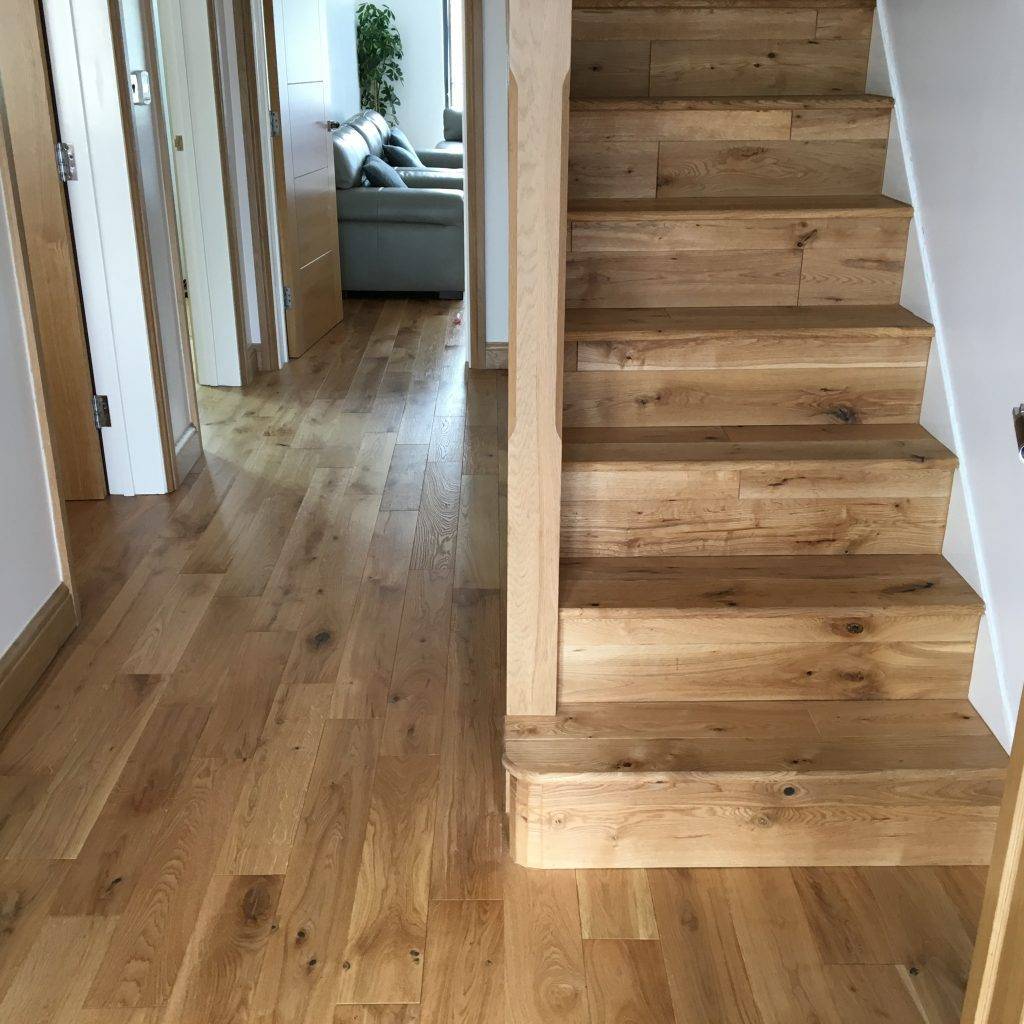What is Real Wood Flooring?
Solid wood floors consist of planks and floorboards cut from a single tree. This natural timber option is one of the oldest forms of flooring and gives your home a classic feel. There are many variations in real wood flooring which depend upon the species of tree from which it originates. This can be seen in the grain, colour and tone of the wood.

The Pros and Cons of Real Wood Floors
The Advantages
1. Rooms get a beautiful look and a classic feel. This is very appealing to buyers should you be looking at your property as an investment.
2. A solid wood floor makes a big statement piece.
3. Solid wood floors have a long lifespan. They can last for many decades if looked after correctly, so while they are often more costly to install initially, they can be sanded, finished and repurposed many times. They are a good option for high trafficked areas such as hallways. But also look great in living rooms too.
The Disadvantages
1. Solid wood flooring does not sit well over underfloor heating. Because the boards are sensitive to temperature they will over time expand and warp in this scenario. In this situation we would recommend engineered wood flooring instead so that you still get the appearance you desire.
2. Real wood floors are not waterproof. Bathrooms and showers cause an increase in moisture in the atmosphere and the wood will absorb this and expand and contract. Spaces where there are likely to be bath and sink spillages should be avoided.
Which size and thickness of real wood flooring should I choose?
The thicker the flooring, the stronger it is and the more times it can be sanded and treated within its lifespan. Thicker boards which are intended to bear loads will be a better choice if being installed directly over joists. Where there is a sold boarded base, a thinner real wood flooring can be used instead. That said, if the original floor you are replacing is more shallow a thinner floorboard may act as a more suitable replacement.
Generally, bigger rooms can take a wider board to give it a more expansive feel and to demonstrate the aesthetics of the material. A smaller space is better suited to narrower floorboards.
Types of Real Wood Flooring
Depending upon the species of tree, real wood flooring falls into hard and softwood categories.
Hardwoods like oak, walnut, beech and ash are more durable but are also more expensive as they come from slower growing trees.
Softwoods such as pine, are more economical as they are grown much quicker and come from sustainable and managed forests.
